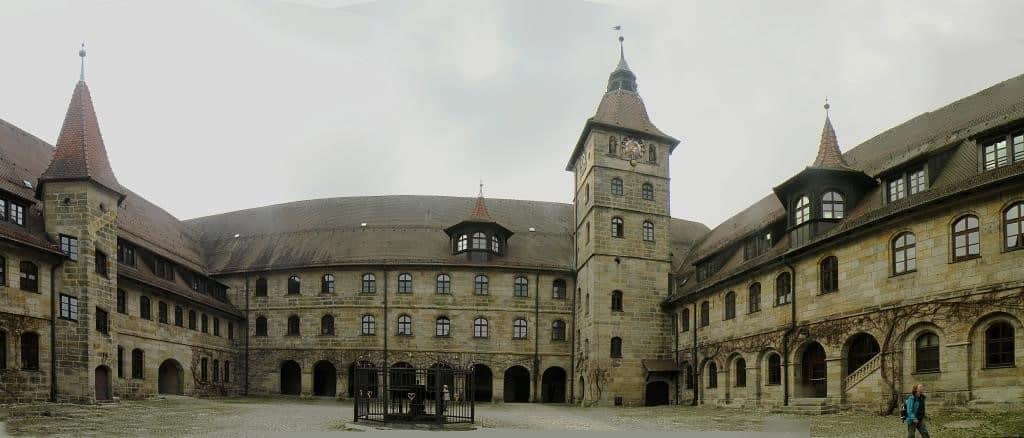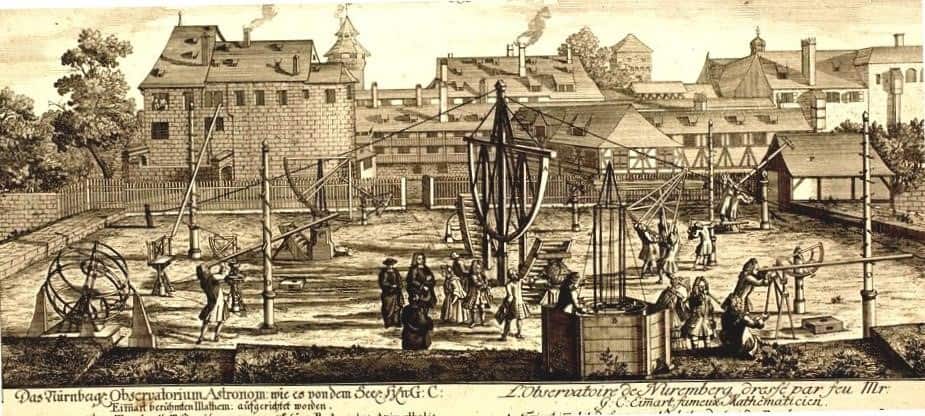FROM “ELEMENTARY LESSONS” TO UNIVERSITY
As early as the 17th century Nuremberg had a diversified school system with Latin schools and an "upper school" near St. Egidien which taught a Christian-Humanist curriculum. The father of Johann Andreas Graff worked there as a teacher and headmaster until his death in 1644. In 1642, even before the end of the Thirty Years' War, a lecture hall for adults was attached to this grammar school, which was open to citizens as an "institution of further education".
For the sons of merchants and craftsmen there were private schools with teachers and maths masters which gave lessons, in German, in reading, writing and arithmetic. The level of literacy in Nuremberg was high, even for girls, who had their own female (!) teachers of writing and arithmetic. The level of alphabetization in Nuremberg was high, even for girls by their own female (!) teachers of writing and arithmetic. Some women could even read and write better than their husbands in those centuries before the industrial revolution, when their homes and workplaces were still on the same premises. For they were not only important assistants in the workshop or in the trade office, but even deputy heads, especially when their husbands were away on business travels.
Innenhof der ehemaligen Nürnberger Universität Altdorf, Kollegiengebäude von 1571-83 (1)
Nuremberg had located some of its important educational institutions outside the city in a fortified country town in its own territory: in Altdorf a university had already been opened in 1623. It had the right to award doctorates in the Faculties of Law and Medicine; and Johann Andreas Graff's brother studied there. In the 17th century the University flourished, boasting famous academic teachers in Philosophy and the Natural Sciences.
Interest in education was generally high, as another example shows: in 1678 one of the best copperplate etchers of his time, Georg Christoph Eimmart, who was married to a sister of Jakob von Sandrart, constructed the first public observatory on the bastion of the Vestnertor at the Imperial Castle (2) . He did this on his own initiative – not as a Council project – but it was still open to the public and free of charge! The Graffs will have been among the curious visitors, since this attraction was only 300 metres away from their house and a stone’s throw from their garden. There they certainly met Maria Clara Eimmart (1676-1707), who grew up to be her father's most important collaborator and whose merits as an astrologer are still praised by experts today.
These examples clearly show that education was provided in many places in the imperial city of Nuremberg and its own territories in the surrounding area. After all, scientific facilities, such as an observatory on a bastion of the Imperial Castle and a huge Council Library, were also open to the public.
Sternwarte von Georg Christoph Eimmart auf der Vestnertorbastei der Kaiserburg in Nürnberg (3)




